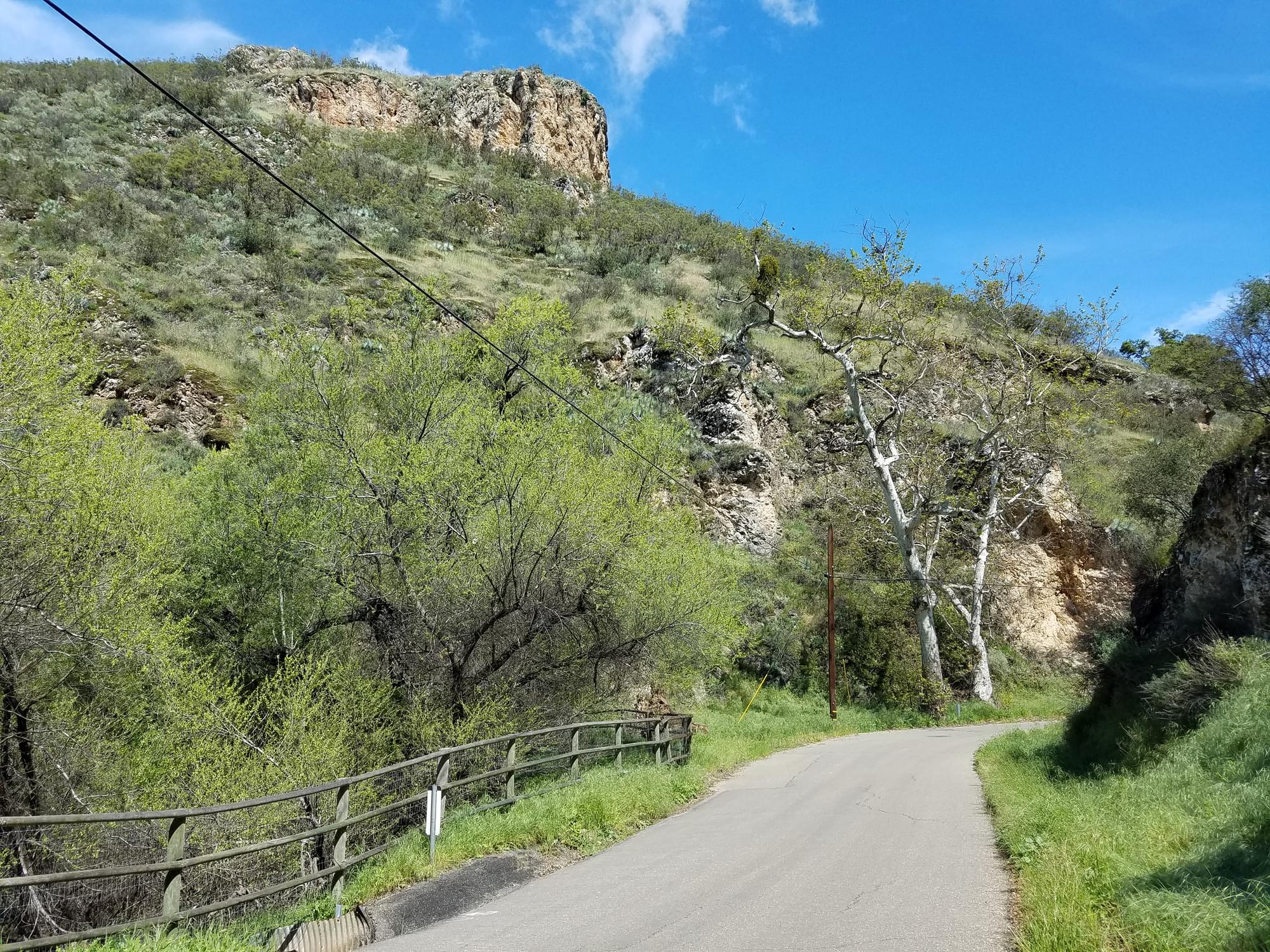Tepusquet Road--south slope

Tips for Birding
Lower Tepusquet Road offers roadside birding in oak woodland habitat, but there are sections where it will be difficult to pull over as you wind your way up the canyon. Most of the ranches and homes are situated in the southern part of the canyon where the road starts relatively straight, but it becomes curvy with blind corners as you head north. Around the 7-mile marker, you will start to find a few places where you can pull a vehicle over, but this is mid-way up the canyon. Pull well off the road and do not block driveway entrances to private residences.
About this Location
This is a driving route without clearly defined Hotspot boundaries. For the purposes of separating this Hotspot from the next adjacent Hotspot, the south boundary can be considered around the 1.5 mile-marker north of the Byron Winery, and the north boundary around the 10.32-mile marker south of the summit area.
South of the summit you will find cliffs and rocky outcroppings on some of the hilltops where chaparral and Yucca grows in more arid habitat. For several miles, dense oaks grow along these hills down to stream-canyon habitat along Tepusquet Creek. Tepusquet Creek is often seasonal and subject to wet winters for water flow, but there are sections where water may be found running all year.
About Tepusquet Road
See all hotspots at Tepusquet Road
This hotspot group includes four hotspots that are only accessible from Tepusquet Road (pronounced ‘TEP-us-kay’) which lies some 12 miles or about a 30-minute drive directly east of Santa Maria. The total length of Tepusquet Road is nearly 16 miles from its northern end at the junction with Highway 166 to its southern end at Sisquoc River. You can reach Tepusquet Road either from Santa Maria Mesa Road or Foxen Canyon Road from the south, or from Highway 166 from the north.
Tepusquet Road itself has been divided into three hotspots: Tepusquet Road--north slope, Tepusquet Road--summit, and Tepusquet Road--south slope. A separate hotspot for Colson Canyon begins at the 5.5-mile marker and follows a dirt road eastward through a narrow canyon where it eventually climbs up to the old Colson Campground (now closed) in the Los Padres National Forest.
Driving from north to south, Tepusquet Road passes by a few ranches and soon ascends up the north-facing slope of a transverse mountain range. At the summit area, the road reaches an elevation of 2000’. It then descends into a canyon formed by Tepusquet Creek. The road passes by several small ranches where the canyon widens to a valley of open fields and vineyards. Here Tepusquet Creek flows into the Sisquoc River. The hills surrounding Tepusquet Road suffered from recent wildfires but the growth is returning.
All four hotspots offer excellent birding in spring from late March to the end of May. Summer months can also be good for breeding birds of the region. Fall and winter are usually very quiet but Varied Thrush (rare) may be present. Concentrating on areas where the creek is closest to the road and where dense oaks form a canopy overhead may be best, but good birding is available at any accessible location.
These four hotspots contain a variety of species typical of oak woodland and stream-canyon habitat. During spring, several warbler species may be found moving through the canyons. These include Nashville, Orange-crowned, Black-throated Gray, Hermit, MacGillivray's (uncommon), Townsend’s, Yellow, and Wilson’s Warblers, all of which may be singing. Flycatchers, vireos, woodpeckers, wrens, grosbeaks, tanagers, and orioles are all expected during migration. Nesting Violet-green Swallows and Canyon Wrens will be found around the rocky outcroppings on the hills around the 7-mile and 8-mile markers of Tepusquet Road. Also look for Costa’s and Black-chinned Hummingbird, Common Raven, Phainopepla, and Lawrence’s Goldfinch. Western Screech-Owl is resident in the oak-covered hills. Flocks of Wild Turkeys are often feeding in the fields near the south end of the canyon around the ranch properties. Western Kingbird may be seen in spring and summer around these ranch areas.
Cyclists will use Tepusquet Road on weekends. Watch for oncoming cyclists, especially in the curvy sections. Traffic is usually light and you can bird while walking the road but be aware of oncoming vehicles. Move well off the road onto the shoulders for passing cars that aren’t expecting people. The temperature can be cold in winter, and quite warm in summer. In spring it may be breezy at times.
Notable bird species in this area include Northern Pygmy-Owl, Golden Eagle, Acorn Woodpecker, Band-tailed Pigeon, Steller’s Jay, Common Raven, White-throated Swift, Costa’s Hummingbird, Canyon Wren, Violet-green Swallow, Varied Thrush, Rufous-crowned Sparrow, and Lawrence’s Goldfinch.
Cell service may be unavailable.
Features
Roadside viewing
Restrooms on site
Wheelchair accessible trail
Entrance fee
Content from Jamie Chavez and Jamie Chavez
Last updated March 16, 2024
 Jamie Chavez
Jamie Chavez